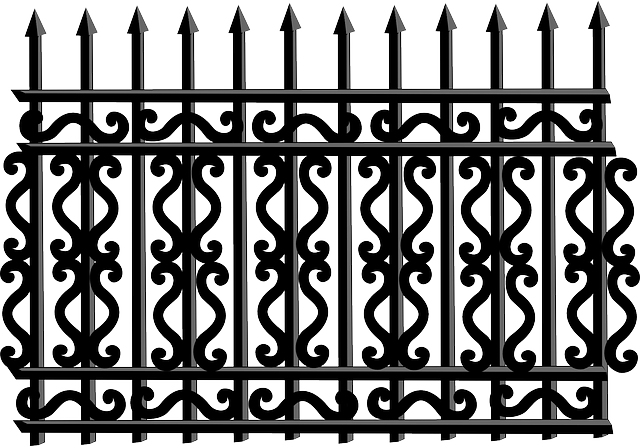In New Bedford, Massachusetts, enhancing your property with a wooden fence offers both aesthetic appeal and functional benefits. This article guides you through the comprehensive process of wooden fence installation, from understanding fundamental processes to selecting the perfect style for your space. We delve into the advantages of professional services, navigate local regulations, and offer expert tips on wood choices and maintenance. Additionally, we provide a step-by-step post-installation care guide, ensuring your new fence stands the test of time.
- Understanding Wooden Fence Installation Processes
- Choosing the Right Fence Style for Your Property
- The Benefits of Professional Installation Services
- New Bedford: Local Regulations and Permits for Fences
- Selecting High-Quality Wood and Maintenance Tips
- Step-by-Step Guide to Post-Installation Care
Understanding Wooden Fence Installation Processes
When it comes to wooden fence installation, understanding the process is key to ensuring a durable and aesthetically pleasing barrier. It starts with meticulous planning and preparation, including measuring the perimeter, choosing the right type of wood suitable for local climates, and selecting the desired style and height. This foundational step is crucial for the entire project’s success.
The actual installation involves skilled technicians who first prepare the ground, ensuring it’s level and compacted. Postholes are then dug, and wooden posts are set in place, serving as the fence’s structural backbone. After securing the posts, horizontal rails are attached, providing support for the vertical picket fences that will form the final barrier. This meticulous craftsmanship guarantees a sturdy and long-lasting fence that enhances any New Bedford property.
Choosing the Right Fence Style for Your Property
When considering a wooden fence installation in New Bedford, Massachusetts, selecting the right style is an essential step to enhance your property’s aesthetics and security. The first step is evaluating your property’s unique features and needs. For instance, if you have a large backyard with plenty of open space, a tall, traditional picket fence might offer both visual appeal and privacy. On the other hand, for smaller, more intimate gardens or patios, a low-lying, decorative fence could be more suitable, providing a subtle border without obstructing the view.
Additionally, thinking about your personal style preferences and the overall design of your home is crucial. Some popular options include charming, rustic styles that complement historic homes, while modern, sleek designs can enhance contemporary architectural features. Consider the visual impact you desire, whether it’s a bold statement or a more subtle, harmonious addition to your landscape.
The Benefits of Professional Installation Services
Hiring professional installation services for your wooden fence in New Bedford, Massachusetts, comes with numerous advantages. Experts in this field bring a wealth of experience and knowledge that ensures your fence is not only installed correctly but also built to last. They understand local building codes and regulations, ensuring your fence complies with all requirements, which could save you from potential legal issues.
Professional installers use high-quality materials and tools, guaranteeing durability and strength. They can offer expert advice on the best type of wood suitable for your climate and conditions, maintaining the health and aesthetics of your fence over time. Moreover, their work is often backed by warranties, providing peace of mind and ensuring any issues are promptly addressed.
New Bedford: Local Regulations and Permits for Fences
In New Bedford, Massachusetts, fence installation projects are subject to local regulations and permit requirements designed to maintain community standards and ensure safety. Before beginning any construction, homeowners or contractors must familiarize themselves with these rules. The city’s planning department oversees permits for various structures, including fences, and can provide detailed information on height restrictions, setback requirements, and permitted materials. Typically, wooden fences in residential areas are regulated to protect neighbors from potential hazards and maintain aesthetic harmony within the neighborhood.
Permits are usually required for fences exceeding certain heights or located in specific zones. Local ordinances may also dictate the type of wood allowed, with a preference for rot-resistant species like cedar or pressure-treated timber. Homeowners should check with the New Bedford building department to understand the specific permit application process and gather any necessary documents, plans, and fees. Adhering to these regulations is crucial to avoid legal issues and ensure a smooth installation process.
Selecting High-Quality Wood and Maintenance Tips
When considering wooden fence installation, selecting high-quality wood is paramount. Opt for durable species like cedar or pressure-treated pine, which offer superior resistance to rot and insects. This investment ensures your fence not only looks good but stands the test of time, reducing the need for frequent replacements.
Regular maintenance is key to keeping your wooden fence in top condition. Apply a fresh coat of sealant every few years to protect against weather damage. Keep the area around the fence clear of debris and ensure proper drainage to prevent water accumulation, which can lead to rot. Regular cleaning and inspection will help you catch any issues early on, ensuring the longevity of your fence.
Step-by-Step Guide to Post-Installation Care
After your wooden fence installation in New Bedford, Massachusetts is complete, proper post-installation care is crucial to ensure its longevity and maintain its aesthetic appeal. Here’s a step-by-step guide:
1. Clean Regularly: Remove any debris, leaves, or twigs that accumulate on top of the fence. A gentle sweep or vacuum can help keep it clean. Avoid using high-pressure washers, as they might damage the wood over time.
2. Inspect for Damage: Monthly inspections are recommended. Look for any signs of rot, warping, or loose boards. Addressing issues early prevents minor problems from turning into major repairs. Keep an eye out for any pests or insects that may cause damage to the wooden fence.
